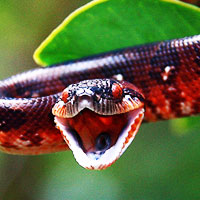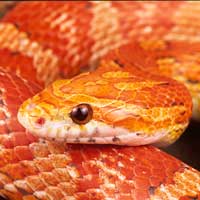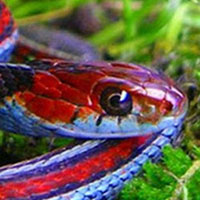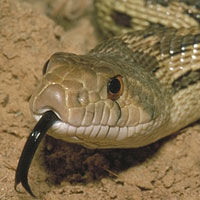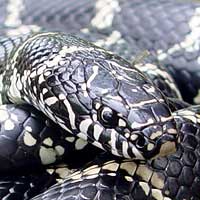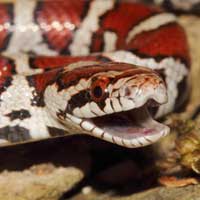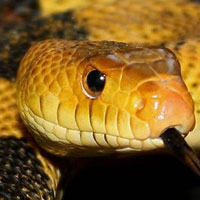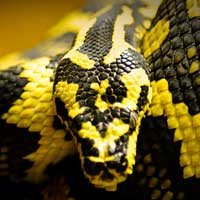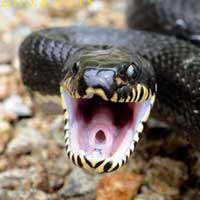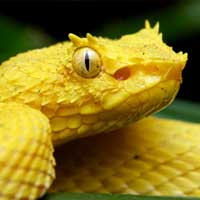Everything You Need to Know About the Spotted Python
The scientific name of the Spotted Python is Antaresia maculosa, and it belongs to the Pythonidae family, which consists of non-venomous constricting snakes commonly referred to as pythons.
Scientific Name: Antaresia maculosa
Snake Family: Pythonidae
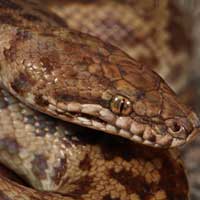
Introduction to the Spotted Python
The Spotted Python (Antaresia maculosa) is a small, non-venomous snake native to Australia. Known for its manageable size, docile nature, and beautiful spotted pattern, this species is a favorite among reptile enthusiasts. The Spotted Python is ideal for beginner and experienced keepers alike due to its ease of care and calm temperament. This guide provides an in-depth look at its habitat, diet, behavior, health, and care requirements, making it a valuable resource for potential owners.
Exploring the Natural Habitat of the Spotted Python
The Spotted Python is native to the warm and arid regions of northeastern Australia. Understanding its natural habitat is key to recreating a suitable environment in captivity.
- Geographic Range: Found in Queensland and northern New South Wales, Australia.
- Preferred Habitat: Rocky outcrops, woodlands, and grasslands.
- Climate: Warm with low to moderate humidity.
| Region | Habitat Type | Key Features |
|---|---|---|
| Queensland | Rocky Outcrops | Ample shelter, stable temperatures |
| Northern New South Wales | Woodlands | Diverse prey availability |
| Grasslands | Open Spaces | Warm climate, hunting opportunities |
Diet and Feeding Habits of the Spotted Python
The Spotted Python is a carnivorous predator with a diet primarily consisting of small vertebrates. In captivity, its feeding needs are straightforward and easy to manage.
- Natural Diet: Small mammals, birds, and reptiles.
- Feeding Frequency:
- Juveniles: Every 5-7 days to support growth.
- Adults: Every 10-14 days depending on size and activity level.
- Captive Feeding Tips:
- Offer pre-killed, thawed rodents such as mice or pinkies.
- Feed in the evening to align with their nocturnal hunting behavior.
- Monitor feeding to avoid overfeeding and potential obesity.
Behavior and Temperament of the Spotted Python
The Spotted Python is known for its calm demeanor and inquisitive nature, making it a popular choice for handling and observation.
- Activity Patterns: Primarily nocturnal, becoming active during the evening and night.
- Defensive Behavior: Rarely aggressive; may hiss or coil when threatened but generally calms quickly.
- Interaction with Humans: Adaptable to handling with consistent, gentle interaction.
By understanding their natural instincts and maintaining a stress-free environment, Spotted Pythons can thrive as interactive pets.
Health and Lifespan of the Spotted Python
With proper care, the Spotted Python can live 15-20 years in captivity. Maintaining its health requires attention to environmental conditions and regular monitoring.
- Common Health Issues:
- Respiratory infections caused by low humidity or improper temperatures.
- Shedding problems (dysecdysis) due to insufficient humidity.
- Parasite infestations such as mites or ticks.
- Preventive Measures:
- Maintain humidity levels between 50-60%.
- Provide a temperature gradient with basking spots at 88°F-92°F.
- Ensure routine enclosure cleaning and health check-ups.
Reproduction and Breeding of the Spotted Python
The Spotted Python is oviparous, laying eggs during the breeding season. Captive breeding requires careful attention to their specific environmental needs.
- Mating Season: Typically occurs during the cooler months.
- Clutch Size: 6-15 eggs per clutch.
- Incubation Period: 50-60 days at temperatures of 86°F-88°F.
- Breeding Tips:
- Simulate seasonal changes to encourage breeding behavior.
- Provide a nesting box with moist substrate for egg-laying.
- Monitor incubation conditions to ensure healthy hatchlings.
Handling and Caring for a Spotted Python
Handling and caring for a Spotted Python is straightforward with proper preparation and consistency. Their manageable size and calm demeanor make them ideal pets.
- Enclosure Requirements:
- Minimum size: 3’ x 2’ x 2’ for adults.
- Include secure hiding spots, climbing branches, and a water dish.
- Maintain proper ventilation and temperature gradients.
- Handling Tips:
- Handle gently and support the snake’s entire body.
- Avoid handling during shedding or immediately after feeding.
- Wash hands before and after handling to maintain hygiene.
By meeting their specific needs, Spotted Pythons can provide years of enjoyment and fascination for their keepers.
Other Snakes In This Species
 Amethystine Python
Amethystine Python Ball Python
Ball Python Black-Headed Python
Black-Headed Python Boelens Python
Boelens Python Borneo Blood Python
Borneo Blood Python Burmese Python
Burmese Python Burrowing Python
Burrowing Python Centralian Python
Centralian Python Childrens Python
Childrens Python Coastal Carpet Python
Coastal Carpet Python Diamond Python
Diamond Python Green Tree Python
Green Tree Python Indian Python
Indian Python Inland Carpet Python
Inland Carpet Python Jungle Carpet Python
Jungle Carpet Python Macklots Python
Macklots Python Malaysian Blood Python
Malaysian Blood Python Olive Python
Olive Python Pygmy Python
Pygmy Python Reticulated Python
Reticulated Python Ringed Python
Ringed Python Rock Python
Rock Python Rough Scaled Python
Rough Scaled Python Spotted Python
Spotted Python Sumatran Blood Python
Sumatran Blood Python Timor Python
Timor Python White Lipped Python
White Lipped Python
